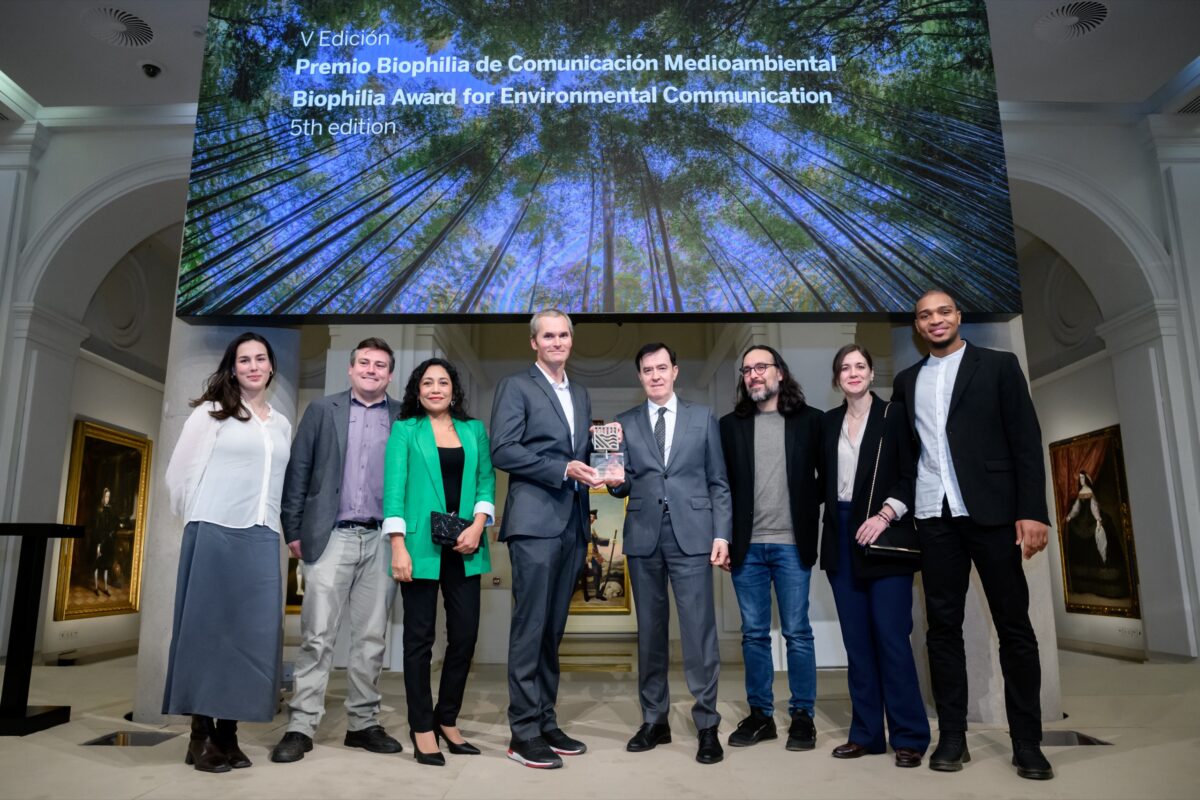On Monday night I gave a lecture at the prize ceremony for the BBVA Foundation’s 5th Biophilia Award for Environmental Communication (English) (program). The event was held in Madrid. I was asked to speak about “Reasons for hope in the face of the global environmental crisis” and provide a text of my remarks ahead of the lecture.
Normally I wouldn’t write out a text for a talk since I’m much better presenting off-the-cuff than working off a script, but since a prepared document was requested, I’m publishing it here.
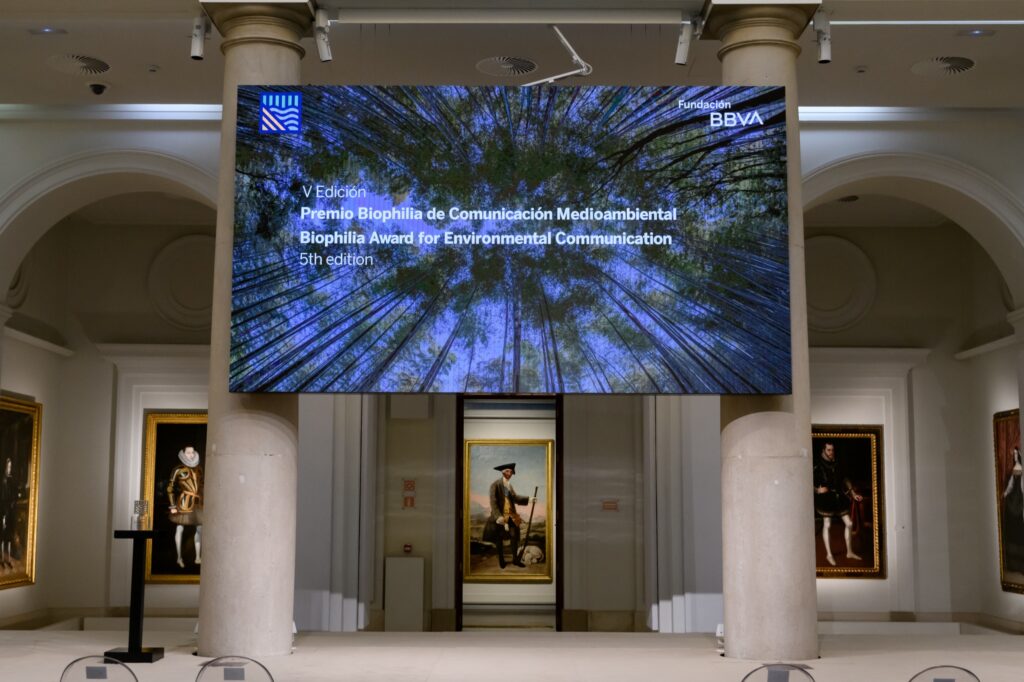
Fundación BBVA recorded the event.
Here’s a practice run of the lecture which has more visuals.
LECTURE: Reasons for hope in the face of the global environmental crisis
In the mid-1990s, I had the opportunity to visit a breathtaking lowland rainforest in Malaysian Borneo. That forest, with its towering trees, crystal-clear streams, and a spectacular array of wildlife including hornbills and endangered orangutans, left an indelible mark on my memory.
Tragically, a few months following my visit, this lush landscape was decimated, giving way to an oil palm plantation.
This devastating transformation ignited my journey to establish Mongabay. Over the years, I’ve borne witness to escalating environmental destruction globally.
Indeed, 2023 was the hottest year on record, we saw severe droughts from the Amazon to Sumatra, and species extinction rates have soared to at least 1,000 times above normal.
And in the first few weeks of 2024, we’ve experienced the warmest-ever ocean temperatures, received new evidence that the Atlantic Meridional Overturning Current is showing early signs of collapse, had scientists tell us the timeframe for the die-off of the Amazon rainforest is sooner than previously thought, and seen torrential storms in Southern California.
These alarming statistics could easily lead to despair and inaction, yet Mongabay remains committed to documenting these harsh realities. In fact, I’ve been told that “Mongabay is the most depressing site on the internet.”
Despite these grim observations, there is still room for hope, fuelled by stories our global network of journalists is delivering from Nature’s frontline. This isn’t about naive optimism; it’s about being realistically hopeful, recognizing emerging trends that could help us mitigate these crises.
From poverty-driven to profit-driven environmental degradation
One such trend, somewhat counterintuitive, is the shift in who’s most responsible for environmental degradation. Today a growing share of damage is driven by corporations and governments rather than by subsistence activity. In other words, we’re shifting from poverty-driven to profit-driven environmental degradation.
This shift is significant because it narrows the focus to fewer entities causing major planetary harm. For instance, tackling deforestation once meant working to persuade poor farmers to protect forests when their primary concern was putting food on the table for their families. That meant devising sustainable livelihoods for rural populations—a tough challenge.
Now that most deforestation is driven by commodity production for urban and export markets, saving forests often involves urging companies and governments to adopt more environmentally-friendly practices that don’t necessarily undercut productivity or profits, and can yield other gains from improved supply chain management and operational efficiency.
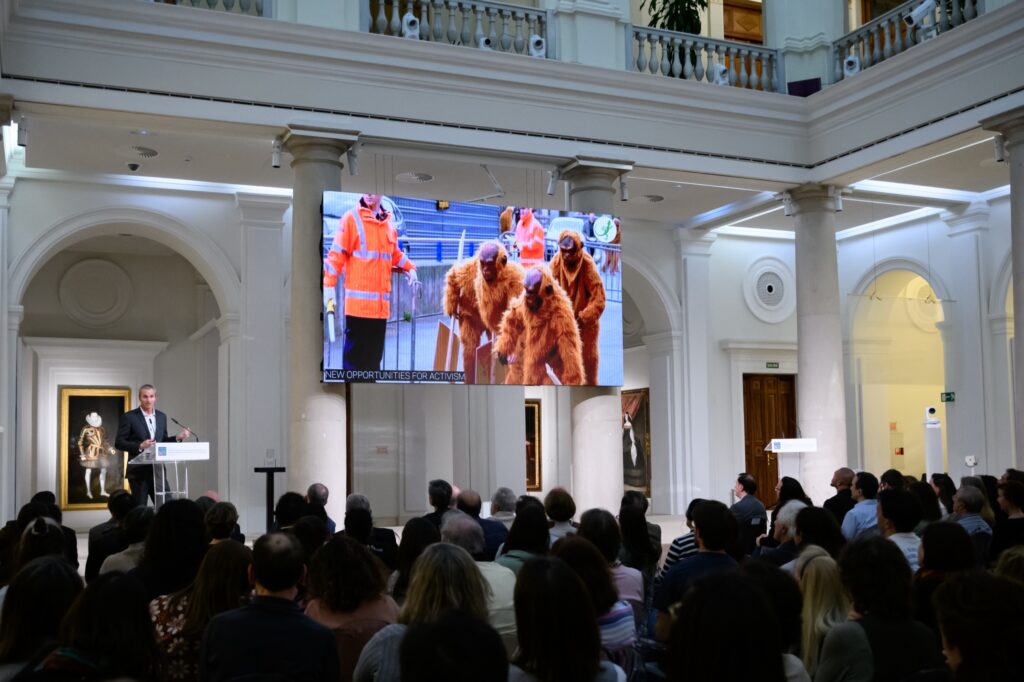
That shift has given environmental activists new leverage and tools to push for change.
A prime example of this power is evident in a series of Greenpeace campaigns that began in the mid-2000s. These campaigns targeted some of the largest drivers of deforestation, including the palm oil industry in Indonesia and Malaysia, as well as the soy and cattle industries in the Brazilian Amazon. They shared a common approach: targeting large, conspicuous, consumer-facing companies that sell in Western markets.
In the years that followed hundreds of companies committed to eliminate deforestation from their supply chains. Ultimately these weren’t just Western companies–many of the world’s largest companies made these commitments. They were followed by governments, which declared targets to bar commodities linked to tropical deforestation from their markets.
The results from these developments have been tangible. Deforestation associated with palm oil has plunged 90% in Malaysia and Indonesia since the early-2010s, while Amazon rainforest clearing for soy has also declined sharply.
Of course there’s still a long way to go: Many have fallen short of their promises. But there are more tools than ever before to monitor and verify compliance, which brings me to another trend which gives me hope: Rapid advancements in remote sensing.
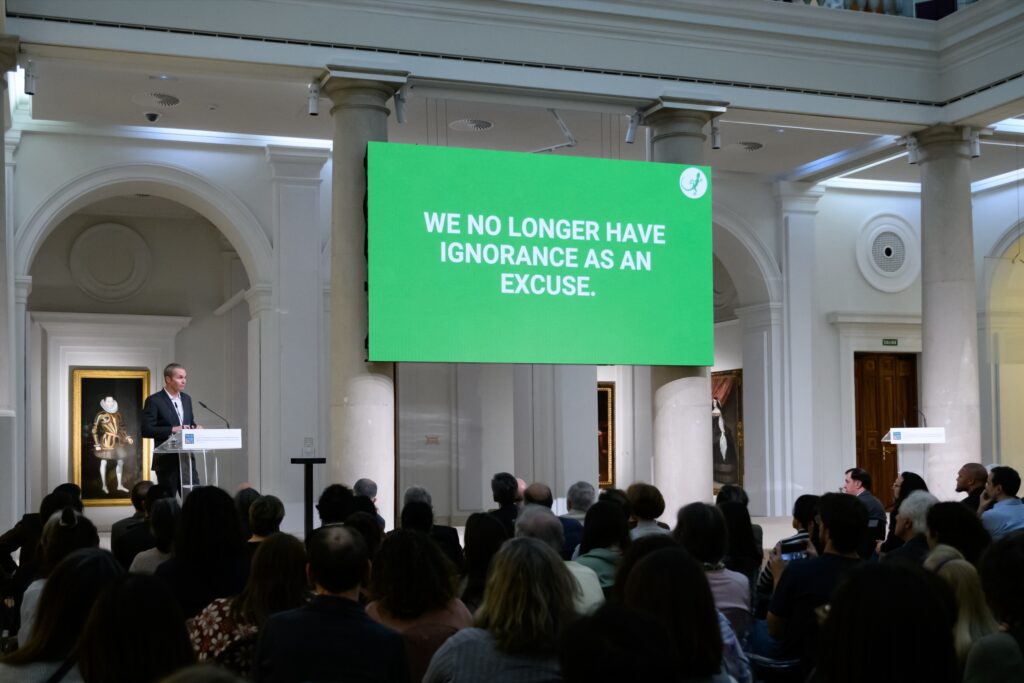
Slide: We no longer have ignorance as an excuse.
Another positive trend is the unprecedented transparency provided by technologies like satellite imaging. With these tools offering near-real-time insights into our planet’s condition, ignorance can no longer be an excuse for inaction.
Data from satellites, camera traps, and bioacoustic devices are now widely used by civil society groups, companies, governments, and journalists to see what’s happening on time scales relevant for action. This is having a real impact: Research by the Climate Policy Initiative attributed three-fifths of the decline in deforestation in the Brazilian Amazon between 2007 and 2011 to the country’s monitoring system.
That deforestation monitoring capability has since been expanded around the world and now goes well beyond where it stood just five years ago. Radar even allows observers to “see through” clouds and smoke, detecting changes in forest cover that used to be obscured.
Furthermore, platforms like Planet have greatly increased the frequency of updates. Imagery from across the tropics is now freely available via Global Forest Watch, democratizing this data and empowering actors – including non-experts – all around the world.

Slide It’s harder to hide
One of my favorite examples of what satellites have enabled comes from a Mongabay investigation several years ago.
In 2014, a cacao company had an IPO in London, raising millions of dollars.
The company portrayed itself as a good corporate citizen producing a product most people love, in a responsible way. It was a nice story, but it was completely false. The problem was, no one knew that at the time.
While the company was celebrating its IPO, satellite images of the Peruvian Amazon showed large-scale clear-cutting.
Using satellite data, Mongabay journalists could see that this company had actually been destroying large tracts of Amazon rainforest in one of the most biodiverse areas on the planet.
The company didn’t take kindly to our investigative work, and tried to stop the story before publication. But the data was based on the best science and, therefore, irrefutable.
After we published a series of stories, other global outlets covered the issue and activists took up the cause, prompting the local government to revoke the company’s permits.
In January 2017, the company was delisted from the stock exchange, depriving it of the critical capital it needed to expand.
Further reporting showed that the impact of stopping the company was much larger: its owner had planned to clear about 100,000 hectares of rainforest.
Because of that delisting, this destruction did not occur. In climate terms, that’s about 30 million tons of CO2 that did not end up in the atmosphere. That’s equivalent to 72 billion miles driven in a car.
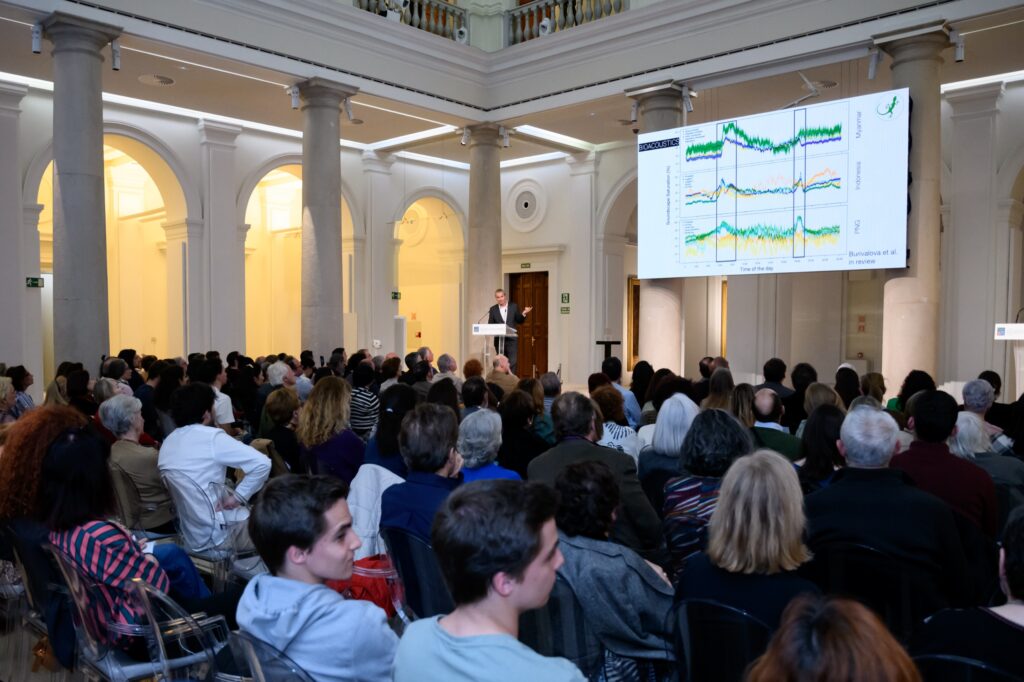
Technology is providing new insights
These gains extend to oceans.
Global Fishing Watch offers unprecedented insights into what’s happening in the world’s oceans, including illegal fishing which was previously undetectable at scale.
Recently released tools are starting to offer similar updates on the world’s coral reefs.
Analysis of the sounds organisms make in an ecosystem – its soundscape – can tell us how ecosystems are faring, whether they are doing better or worse relative to historical levels, and what effects conservation is having.
For example, research shows that more diverse ecosystems have more diverse soundscapes, meaning that more of the sound spectrum is occupied by calling animals like insects, frogs, birds, and mammals. And it can even facilitate action on time-scales relevant for addressing deforestation, poaching, or dynamite fishing by offering the capability to send real-time alerts when certain sounds – whether it’s a gunshot, chainsaw, underwater explosion, or engine – are detected.
Combining soundscape data with data from satellites, camera traps, and environmental DNA provides a much fuller picture on the condition and trajectory of an ecosystem or ecological community than any single source.
New data sources and capacity to analyze big data sets are also improving our understanding of how healthy and productive ecosystems underpin human well-being. And why other species matter.
For example, we now have a much better sense of how biodiversity contributes to carbon sequestration.
Animals play a significant role in how much carbon plants, soil and sediments can capture, as they redistribute seeds and nutrients and disturb soil through digging, trampling, nest-building, and their life cycle.
For example, when a large whale dies and sinks to the bottom of the ocean, it sequesters about 33 tons of CO2 on average, storing that carbon for centuries.
A study published last year in Nature Climate Change extrapolated on “animating the carbon cycle”, the idea that helping populations of animals recover can accelerate the rate of carbon sequestration and storage in ecosystems.
The research estimated that reintroducing nine species or groups of species – African forest elephants, American bison, fish, gray wolves, musk oxen, sea otters, sharks, and whales – could lead to the capture of 6.41 gigatons of CO₂ annually or more than 500 GtCO2 in total carbon removal by 2100. That’s about 95 percent of the amount scientists say needs to be removed to ensure global warming remains below 1.5 degrees Celsius.
Restoring these populations implies conserving some of the world’s most biologically rich and productive habitats and the services they afford like stabilizing coastlines, buffering against extreme weather events, and maintaining precipitation patterns.
This kind of research could also usher in new innovations. Last year I met with a philanthropist who has proposed paying ship captains a portion of the carbon value of a whale as a mechanism to incentivize avoiding whale strikes. Each ship would be outfitted with a pair of drones that would fly miles ahead of the ship. If a whale was sighted, the captain would be alerted in time to take evasive action. The captain would be paid thousands of dollars for their effort.
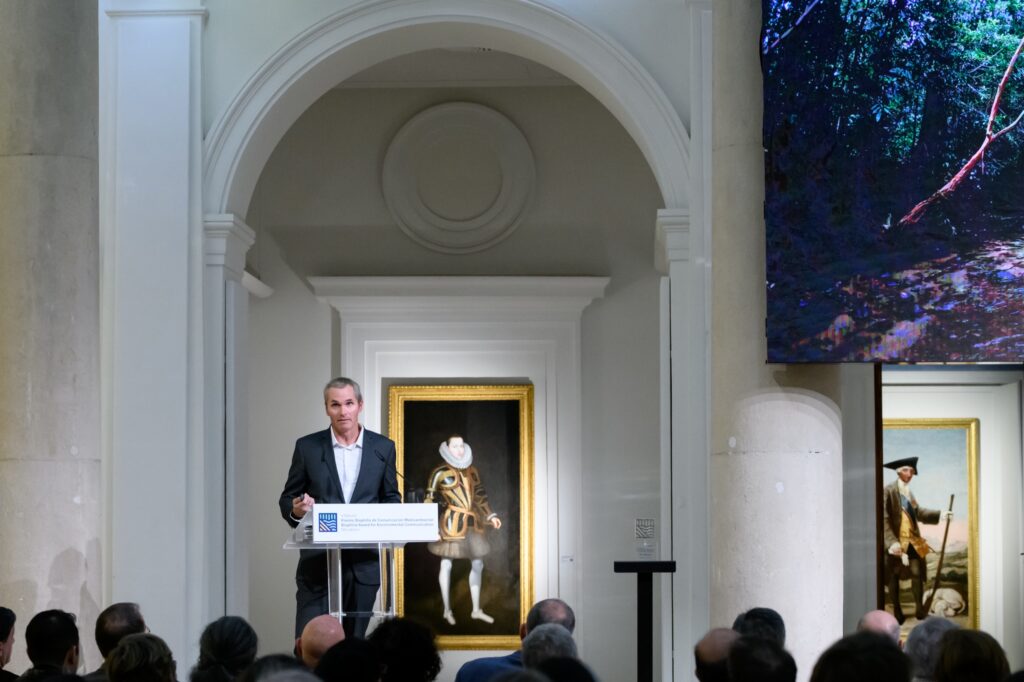
Broadening the constituency for conservation
The benefits of thriving ecosystems and their constituent species, for instance, extend far beyond carbon storage and wildlife habitat to include human health, more resilient agriculture and water supplies, and buffering against storm damage and erosion.
This knowledge offers the opportunity to broaden the constituency for environmental protection. After all, the escalating severity of environmental degradation is inadvertently but progressively making environmental storylines more relevant to more people, provided they believe the science.
But even if they aren’t concerned about the science, people are thinking about conservation in new ways based on broadening the constituency around protecting nature
One good example comes from Indonesian Borneo.
In the 1990s, a researcher named Kinari Webb traveled to Gunung Palung National Park in Kalimantan to study orangutans. There, she discovered that people often resorted to illegal logging when facing catastrophic healthcare emergencies and in need of quick cash for medical assistance, the access to and quality of which were at best limited. Webb realized that protecting the orangutan habitat would be challenging without addressing the community’s healthcare needs, prompting her decision to attend medical school.
Upon completing her residency, Webb founded Health in Harmony, a non-profit organization, and returned to Borneo. Working with a local partner, Alam Sehat Lestari (ASRI), Health in Harmony established a clinic in Sukadana, a small village outside Gunung Palung.
The organizations set up a program that provides discounted healthcare for communities in exchange for a memorandum of understanding (MOU) committing them not to engage in illegal logging. Residents who cannot afford to pay for services at the clinic can instead work on conservation-promoting projects, including an organic farm and seedling nursery, which is growing trees to be used in reforestation efforts.
Results of the initiative, published in PNAS in 2020, found lower rates of deforestation in communities that signed the MoU.
An unexpected outcome from the approach pertains to livelihoods. Small farmers in the area rely heavily on chemical inputs. People who received training in organic farming dramatically reduced their use of chemical fertilizers and pesticides, cutting costs. This shift also enabled them to transition from paddy rice to more profitable crops, such as vegetables.
Health in Harmony’s approach has broadened the local constituency for conservation by linking healthcare with forest protection. Local people saw their livelihoods and health outcomes improve while simultaneously protecting the environment and biodiversity. Health in Harmony has since expanded its work to Brazil and Madagascar.
A wider manifestation of this trend around the expanding constituency around conservation is the flood of interest and money flowing into nature-based solutions, from blue carbon to ecosystem restoration projects. In 2022, an estimated $201 billion was directly invested in nature-based solutions, according to a UNEP study.
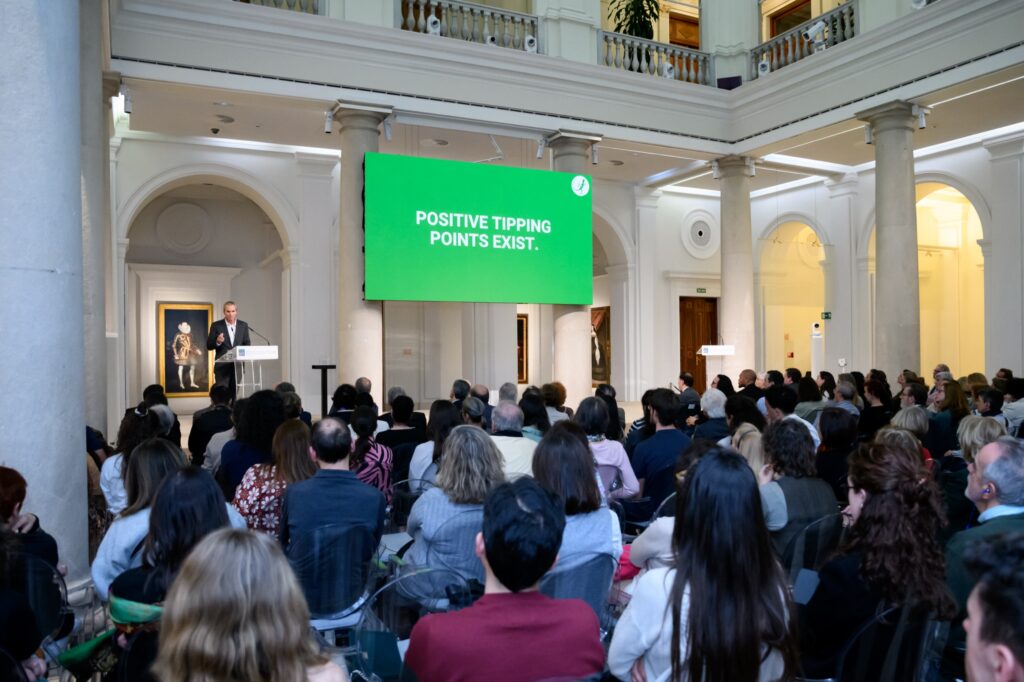
Positive tipping points.
Tim Lenton, a prominent climate scientist and Director of the Global Systems Institute at the University of Exeter, is a proponent of the concept of “positive tipping points” in societal systems that could lead to rapid and profound changes in addressing climate change and sustainability issues. These tipping points refer to small changes that can lead to significant shifts in societal behavior and systems, ultimately contributing to large-scale environmental benefits. Some of the positive societal tipping points include:
Electric Vehicle (EV) Revolution: The adoption of electric vehicles reaching a tipping point, driven by falling costs, technological advancements, and policy support, which could drastically reduce carbon emissions from the transportation sector.
Renewable Energy Transition: The rapid adoption of renewable energy technologies, such as solar and wind power, reaching a tipping point where they become more economical and preferred over fossil fuels, leading to a swift transition to clean energy across the globe.
Regenerative Agriculture: Widespread adoption of regenerative agricultural practices, which restore soil health and sequester carbon, reaching a tipping point through policy support, consumer demand, and farmer adoption. This could significantly contribute to carbon sequestration and biodiversity conservation.
Energy Efficiency in Buildings: Rapid improvements in the energy efficiency of buildings through retrofitting and green construction practices becoming the norm, driven by policy, technological advancements, and societal demand for sustainable living spaces.
Increased Focus on Circular Economy: The concept of a circular economy, which emphasizes the reuse, recycling, and recovery of materials, is gaining traction globally. This approach reduces waste, conserves resources, and minimizes environmental impact.
Advancements in Sustainable Materials: Research and development in sustainable materials, such as bioplastics, recyclable composites, and materials derived from waste products, are reducing dependency on non-renewable resources and decreasing pollution.
These positive tipping points can synergize with each other, creating a cascade of changes that accelerate the transition to a more sustainable and resilient society. The concept underscores the potential for deliberate actions and policies to leverage these tipping points, steering the global community towards meeting climate goals and ensuring a habitable planet for future generations.
In the conservation realm, while we probably cannot call them tipping points yet, we’re seeing substantial shifts in how organizations operate, from how they measure success to how they engage with frontline communities. Gone are the days where fortress conservation tactics are embraced without question. Today we’re seeing a stronger emphasis on the role that IPLCs play in achieving conservation outcomes.
Recognizing guardians of the Earth
There’s growing acknowledgment of the role Indigenous peoples and local communities play in maintaining healthy and productive ecosystems. An ever-expanding body of research indicates that community-managed areas often have significantly lower rates of degradation compared to surrounding areas. These community-managed areas are crucial in efforts to protect biodiversity and halt climate change.
A few figures in support on this role:
· At least 36% of the world’s “intact forests” are within Indigenous lands
· Indigenous territories with strong land rights in the Brazilian Amazon showed a significant decrease in deforestation between 1982 to 2016, an effect that does not exist in Indigenous lands without full property rights
· Indigenous territories with strong land rights in the Brazilian Amazon saw more 23% forest recovery than areas directly outside their borders.
Why is this?
Indigenous peoples often possess profound knowledge of their local environments, developed over generations. This intimate understanding allows them to manage ecosystems sustainably, using traditional practices that have proven effective in conserving biodiversity.
For many Indigenous communities, their territory and its natural resources are not just means of subsistence but are also deeply intertwined with their cultural identity, spirituality, and heritage. This intrinsic connection fosters a stewardship ethic that prioritizes the health and sustainability of their environments.
Indigenous peoples are increasingly gaining legal recognition for their lands and resources, which empowers them to manage their territories effectively and to protect them against external pressures such as deforestation, mining, and agriculture expansion.
Indigenous communities often pioneer innovative conservation solutions that balance ecological health with community well-being. Examples include community-based ecotourism, the establishment of indigenous protected areas and no-take zones and seasons, and the integration of traditional ecological knowledge with modern conservation science.
Many lands managed or owned by Indigenous peoples overlap with global biodiversity hotspots.
Restoration is possible.
Nature has shown remarkable resilience when given a chance to recover. Protected areas and regulated industries have seen ecosystems rebound, endangered species recover, and water and air quality improve in various places around the world.
Last month I had the great fortune of traveling to Raja Ampat, a region off the northwestern tip of New Guinea.
Raja Ampat is a place of spectacular beauty. It has the highest marine biodiversity in the world.
It is also a place that offers hope in terms of nature’s resilience.
20 years ago, Raja Ampat’s shark and ray population was substantially diminished by fishing, including shark finning.
Conservation efforts, including a ban on commercial fishing and the establishment of no-take zones, has resulted in a dramatic recovery of sharks and rays in some areas.
A recent study found that reef manta ray populations saw up to 10.7% compound annual increase from 2009-2019 in the region, bucking a global trend of decline.
Anecdotally, dive operators – from modest homestays to resorts catering to well-heeled foreigners — have reported a boom in populations in the waters around their lodges.
The logic is basic: When people see these animals are worth more alive than dead, they have a vested interest in maintaining their numbers.
This view even persisted during the pandemic, when tourism collapsed in Raja Ampat. There were reports of local communities banding together to protect sharks against finners during the worst of the crash. They believed that if shark populations were maintained, the tourists would come back. And they did.
Slowing population growth
Lastly, demographic trends may have positive implications for other species that share our planet. The human population is now expected to peak before 2080 at 10 billion, which is significantly lower than previous estimates. Declining child mortality rates, advancements in health, and the empowerment of women are all contributing to this development.
Of course, consumption acts as a multiplier on population, so it remains a factor in our future. However, for the first time in centuries, humanity is navigating a future with a substantially smaller population.
The importance of journalism
These are among many promising developments, but their impact is limited if they remain unknown. Awareness is the precursor to action, and this is where the pivotal role of journalism comes into play. Journalism not only informs but also inspires and mobilizes public action. It’s through well-researched, compelling storytelling that the broader public becomes engaged and motivated to participate in these solutions.
Every challenge presents an opportunity for solutions. Addressing the global environmental crisis demands persistent, collective action grounded in accurately conveyed facts.
At Mongabay, we recognize this imperative and are increasingly employing solutions journalism to approach environmental issues with a focus on potential solutions. We strive to move beyond doom and gloom, highlighting effective, innovative strategies that make a real difference.
By presenting these success stories, we aim not just to inform, but to empower. Maintaining hope and optimism is vital in the face of daunting environmental challenges. These sentiments fuel the creativity needed for new technologies, strategies, and approaches. Solutions journalism plays a critical role in fostering this hope by showcasing how challenges can be, and are being, overcome. This approach doesn’t just report on problems; it illuminates the path forward.
A prime example of journalism’s impact is evident in Gabon, where Mongabay’s coverage on the Massaha community’s struggle against a Chinese logging company led to significant action. Our reporting drew the attention of Gabon’s environment minister, resulting in the revocation of the company’s permit and the subsequent protection of the community’s forest. This was a landmark decision because it was the first time an area will be declared protected in Gabon at the request of a resident community.
Indeed, there are reasons to remain hopeful. History has shown that societal change can happen rapidly and on a large scale. The challenge isn’t just about changing quickly enough to avoid the worst environmental impacts; it’s about uniting globally to amplify and expand the solutions already in place. Journalism, especially data journalism, plays a crucial role in this endeavor. It provides the necessary rigor and accuracy to ensure our efforts are not merely superficial ‘greenwashing’ but are genuinely effective.
I firmly believe that journalism is more than a profession; it’s a duty to illuminate often uncomfortable truths essential for change. In the realm of environmental conservation, the role of journalism is indispensable.
Overcoming the challenge of a degraded information ecosystem
Before closing, I would be remiss if I failed to address trends in the media landscape and the broader information ecosystem.
To briefly summarize these,
● Declining news consumption: Interest in news is plummeting across most platforms and geographies.
● Growing news avoidance: A big reason for the decline in news consumption is that nearly 40% of people actively avoid reading the news because it upsets them, they dislike the coverage, or they distrust journalists.
● Evolving social media landscape: This requires media outlets and journalists to frequently reassess which platforms warrant their time + resources. Additionally, many social platforms banning or deprioritizing news content.
● Increased polarization: Many individuals prioritize content that affirms their political beliefs over factual information, making it difficult to engage audiences.
These are major challenges for environmental communicators. But our recent experience, which is validated via research by the Reuters Institute at Oxford University, suggests some ways we can continue to reach and engage people.
First, we at Mongabay remain focused on our core strategies:
● Producing high-quality, original reporting.
● Making our content freely available.
● Taking an iterative approach to navigating shifts in news consumption patterns.
● For distribution, we concentrate on platforms that foster quality engagement, as this is more likely to contribute to tangible impact. Consequently, we’ve lessened our emphasis on platforms that generate superficial traffic.
We’ve also considered the nature of content that will resonate with readers who may be weary of negative news and those with varying political perspectives.
We’ve ramped up our solutions journalism coverage. For example, we’ve expanded series on Indigenous-led conservation, WildTech, and nature-based solutions, and produced more explainer content, especially videos. The Reuters Institute data indicates that news avoiders are most likely to engage with such content.
Climate change and environmental news has become highly polarized, making it difficult to reach audiences across the political spectrum, including people in key decision-making roles. However, addressing these topics in the context of tech, security, finance, and business implications might engage those who’d typically disengage. For instance, many of Mongabay’s climate stories are framed around the impact on a species, ecosystem, or local community, sidestepping a political perspective.
The path ahead is challenging, but not without hope
The journey of Mongabay reflects a broader narrative in environmental conservation: the power of informed, engaged journalism to drive meaningful change. As we confront the multifaceted challenges of climate change and mass extinction, the role of solutions-focused journalism becomes increasingly crucial. It serves as a beacon, guiding us through the complexities of these issues and offering tangible, inspiring examples of progress and possibility.
The path ahead is undoubtedly challenging. However, with relentless pursuit of truth and a focus on solutions, journalism has the power to do more than just document the state of our world; it can help transform it for the better. This mission, at its core, is an act of hope – a belief in the capacity of informed action to create a more sustainable, equitable world for generations to come.
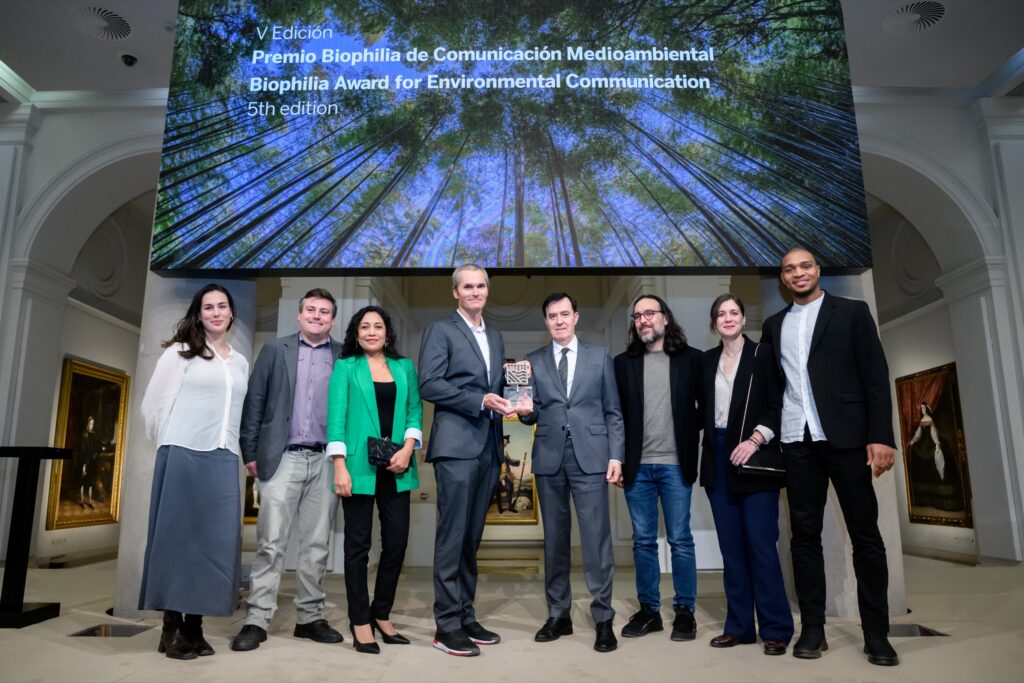
Some press around the event:
- Rhett A. Butler, fundador de Mongabay: “Pese a las predicciones climáticas sombrías hay esperanza” (El Mundo)
- Rhett A. Butler, director de Mongabay: “Me gustaría ver a más medios cubriendo los mismos temas que hacemos nosotros, no los veo como competencia” (EFE)
- Rhett Butler (Mongabay) propone un ‘periodismo de soluciones’ frente a la crisis climática y de biodiversidad (EFE)

